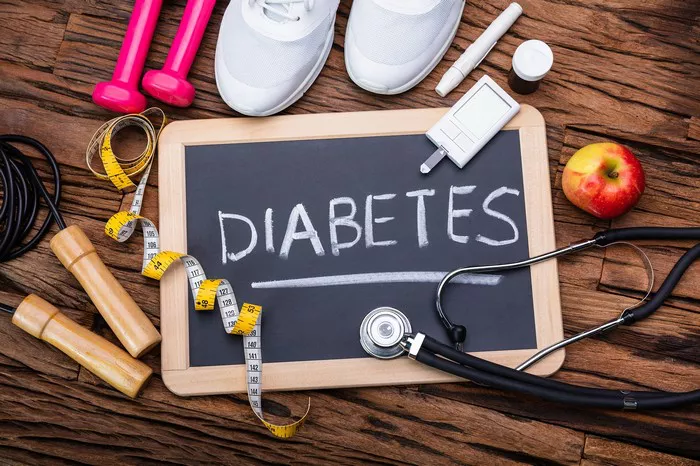Type 2 diabetes is a chronic condition characterized by insulin resistance and impaired insulin production. While manageable with appropriate medical intervention, lifestyle changes, and medication, untreated type 2 diabetes can lead to a host of serious health complications. This article explores the progression of untreated type 2 diabetes, its effects on various organs and systems, and the importance of timely management and treatment.
Understanding Type 2 Diabetes
Type 2 diabetes occurs when the body becomes resistant to the effects of insulin, a hormone that regulates blood sugar levels, or when the pancreas does not produce enough insulin to maintain normal glucose levels. Unlike type 1 diabetes, which is primarily an autoimmune condition, type 2 diabetes is often associated with lifestyle factors such as obesity, sedentary behavior, and poor diet.
The Initial Stages of Type 2 Diabetes
In the early stages of type 2 diabetes, individuals may experience mild symptoms or none at all. Common early symptoms include:
- Increased thirst and frequent urination
- Unexplained weight loss
- Fatigue and weakness
- Blurred vision
- Slow-healing sores or frequent infections
These symptoms result from elevated blood glucose levels, which begin to affect the body’s normal functions. However, many individuals may dismiss these symptoms or remain unaware they have diabetes, allowing the condition to progress untreated.
Effects of Chronic Hyperglycemia
Chronic hyperglycemia, or consistently high blood glucose levels, is the hallmark of untreated type 2 diabetes. Over time, hyperglycemia can cause significant damage to various organs and systems in the body. Here are the primary areas affected:
Cardiovascular System
Heart Disease: High blood sugar levels can damage blood vessels and the nerves that control the heart. This increases the risk of heart disease, including coronary artery disease, angina, heart attack, and stroke.
Hypertension: Diabetes often coexists with high blood pressure, further increasing the risk of cardiovascular complications. The combination of diabetes and hypertension can be particularly dangerous.
Atherosclerosis: Elevated blood sugar levels contribute to the buildup of fatty deposits in the arteries (atherosclerosis), which can lead to reduced blood flow and an increased risk of heart attack and stroke.
Nervous System
Peripheral Neuropathy: High blood sugar levels can damage peripheral nerves, leading to peripheral neuropathy. Symptoms include tingling, numbness, burning, and pain in the hands and feet. Severe cases can result in muscle weakness and loss of coordination.
Autonomic Neuropathy: This type of neuropathy affects the autonomic nervous system, which controls involuntary functions such as heart rate, digestion, and bladder control. Symptoms can include digestive issues, urinary problems, and sexual dysfunction.
Kidneys
Diabetic Nephropathy: Chronic hyperglycemia can damage the kidneys’ filtering units, leading to diabetic nephropathy. This condition impairs the kidneys’ ability to filter waste products from the blood, potentially resulting in kidney failure. Symptoms include swelling in the legs and feet, high blood pressure, and increased protein in the urine.
Eyes
Diabetic Retinopathy: High blood sugar levels can damage the blood vessels in the retina, leading to diabetic retinopathy. This condition can cause vision problems and, in severe cases, blindness. Symptoms include blurred vision, floaters, and dark or empty areas in the vision.
Cataracts and Glaucoma: People with diabetes are at higher risk for developing cataracts (clouding of the eye’s lens) and glaucoma (increased pressure in the eye), both of which can contribute to vision loss.
Skin
Infections and Ulcers: Elevated blood glucose levels can impair the body’s ability to fight infections, making individuals more susceptible to skin infections and slow-healing sores. Diabetic ulcers, particularly on the feet, can become severe and lead to amputation if not properly treated.
Digestive System
Gastroparesis: This condition occurs when high blood sugar levels damage the vagus nerve, which controls the stomach muscles. Gastroparesis leads to delayed stomach emptying, causing symptoms such as nausea, vomiting, bloating, and abdominal pain.
Acute Complications
Untreated type 2 diabetes can also lead to acute, life-threatening complications:
Diabetic Ketoacidosis (DKA)
While more common in type 1 diabetes, DKA can occur in individuals with type 2 diabetes, particularly if they have severe insulin deficiency. DKA happens when the body starts breaking down fat for energy instead of glucose, producing ketones as a byproduct. High levels of ketones can lead to acidosis, which requires immediate medical attention. Symptoms include:
- Severe thirst and frequent urination
- Nausea and vomiting
- Abdominal pain
- Shortness of breath
- Fruity-scented breath
- Confusion and unconsciousness
Hyperosmolar Hyperglycemic State (HHS)
HHS is a serious condition that can occur in individuals with type 2 diabetes. It involves extremely high blood glucose levels without the presence of significant ketones. HHS can lead to severe dehydration and electrolyte imbalances, requiring urgent medical care. Symptoms include:
- Extreme thirst and frequent urination
- Dry mouth and skin
- Fever
- Drowsiness and confusion
- Vision loss
- Seizures and coma
Long-Term Impact on Quality of Life
The complications of untreated type 2 diabetes can significantly impact an individual’s quality of life. Chronic pain, loss of mobility, vision problems, and other health issues can lead to disability and dependence on others for daily activities. The emotional and psychological burden of living with these complications can also contribute to depression and anxiety.
Economic Impact
The economic burden of untreated type 2 diabetes is substantial. Direct medical costs for treating diabetes complications, such as hospitalizations, medications, and surgeries, are significant. Additionally, indirect costs, such as lost productivity, disability, and reduced earning capacity, further strain individuals, families, and the healthcare system.
Importance of Early Detection and Treatment
Early detection and appropriate management of type 2 diabetes are crucial for preventing or delaying complications. Here are some key steps in managing the condition:
Regular Monitoring
Blood Glucose Testing: Regular self-monitoring of blood glucose levels helps individuals understand how their body responds to different foods, activities, and medications.
HbA1c Testing: Regular HbA1c tests provide an overview of long-term blood glucose control, helping healthcare providers adjust treatment plans as needed.
Medication Management
Oral Medications: Various oral medications can help manage blood glucose levels in type 2 diabetes. These include metformin, sulfonylureas, DPP-4 inhibitors, and SGLT2 inhibitors.
Insulin Therapy: Some individuals with type 2 diabetes may require insulin therapy to achieve optimal blood glucose control, particularly if other medications are insufficient.
Lifestyle Changes
Healthy Diet: A balanced diet rich in whole grains, lean proteins, healthy fats, and plenty of fruits and vegetables can help manage blood glucose levels. Portion control and carbohydrate counting are essential strategies.
Regular Exercise: Physical activity improves insulin sensitivity and helps lower blood glucose levels. Aim for at least 150 minutes of moderate-intensity exercise per week.
Weight Management: Achieving and maintaining a healthy weight can significantly improve blood glucose control and reduce the risk of complications.
Education and Support
Diabetes Education: Participating in diabetes education programs can empower individuals with the knowledge and skills needed to manage their condition effectively.
Support Groups: Joining support groups provides a sense of community and shared experiences, which can be beneficial for emotional well-being.
See also: What Type of Diabetes Makes You Lose Weight?
Conclusion
Untreated type 2 diabetes can lead to a wide range of severe complications affecting multiple organs and systems. Chronic hyperglycemia damages the cardiovascular system, nervous system, kidneys, eyes, skin, and digestive system. Acute complications like diabetic ketoacidosis and hyperosmolar hyperglycemic state can be life-threatening. The long-term impact on quality of life and the economic burden further underscore the importance of early detection and treatment. By regularly monitoring blood glucose levels, adhering to prescribed medications, making lifestyle changes, and seeking education and support, individuals with type 2 diabetes can effectively manage their condition and prevent or delay complications.
Related topics:
What are the Different Types of Diabetes Medication


























